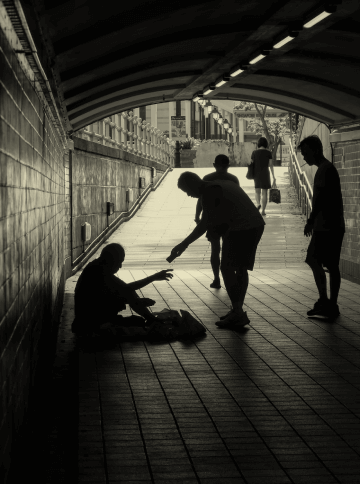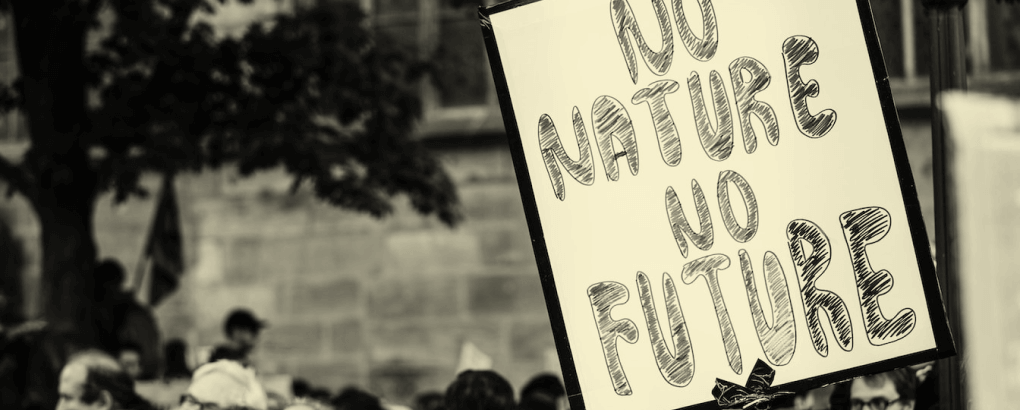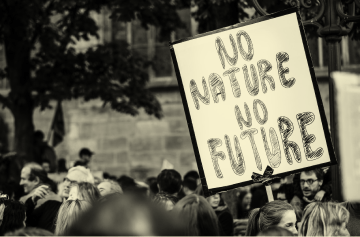Our vision.
Equality ensures everyone has an equal opportunity to make the most of their lives and talents.
Our reality.
Historic, institutional and cultural forces uphold systems of inequality and oppression.
Inequality is intersectional.
Multiple dimensions of inequality interact with one another and create distinct experiences and outcomes.
A person born into a low-income, rural family, with little political representation and access to health care, will face many more obstacles to coping with climate impacts than a wealthy person born in the same country.
The theory of intersectionality, first introduced by Kimberlé Williams Crenshaw , offers us a more holistic lens to understanding climate inequality, than solely the place and class a person was born into.
Inequality is intersectional.
Multiple dimensions of inequality interact with one another and create distinct experiences and outcomes.
A person born into a low-income, rural family, with little political representation and access to health care, will face many more obstacles to coping with climate impacts than a wealthy person born in the same country.
The theory of intersectionality, first introduced by Kimberlé Williams Crenshaw , offers us a more holistic lens to understanding climate inequality, than solely the place and class a person was born into.
Wealth & income inequality.
Income is a significant driver of other inequalities.
By analysing specific realms of inequality, we can work to develop a data informed understanding of intersectionality.
Although inequality is much more than just wealth or income, it plays a big part and greatly impacts other dimensions of inequality. Income significantly affects individuals' ability to make the most of their lives and talents.
Wealth & income inequality.
Income is a significant driver of other inequalities.
By analysing specific realms of inequality, we can work to develop a data informed understanding of intersectionality.
Although inequality is much more than just wealth or income, it plays a big part and greatly impacts other dimensions of inequality. Income significantly affects individuals' ability to make the most of their lives and talents.
Distribution of global wealth.
Globally, the median income is €7.20 per person per day. This is only 71c more than the poverty line for upper-middle income countries which is €6.49 per day.
Distribution of global wealth.
The 10 richest men in the world own more than the bottom 3.1 billion people.
Distribution of pre-tax national income by population group (2021).
Sources: World Inequality Database, Oxfam
Distribution of emissions.
The top 10% are responsible for nearly 50% of emissions.
The wealthiest people are better positioned to deal with the impacts and adaptations to the climate crisis. Meanwhile, the people who contribute least to the crisis also have the least financial resources to react to its impacts.
Source: World Inequality Database
Climate crisis and inequality.
The climate crisis multiplies the threats of existing inequality.


We are all affected by the climate crisis, but the impacts are not felt equally or fairly across the globe. The climate impacts - shifting weather patterns, droughts, flooding, and storms - disproportionately affect people already experiencing inequality and injustice.
People facing additional inequalities are more vulnerable to the risks and are in less resilient positions to cope and recover due to governance, finances and barriers of discrimination. People risk losing their homes and livelihoods to extreme weather events. Think of farmers, fishers and people near waterways. They risk health impacts from extreme conditions and pollution, war, and civil unrest over food and water shortages…
The list goes on.
3.3 to 3.6 billion people live in areas highly vulnerable to climate impacts yet are the least responsible for the crisis.
Multidimensional Inequality
Greater exposure to climate hazards
Less ability to cope with and recover from the damages caused by climate hazards
Greater susceptibility to damages caused by climate hazards
Disproportionate loss of assets and income and greater inequality
3.3 to 3.6 billion people live in areas highly vulnerable to climate impacts yet are the least responsible for the crisis.
Multidimensional Inequality
Greater exposure to climate hazards
Less ability to cope with and recover from the damages caused by climate hazards
Greater susceptibility to damages caused by climate hazards
Disproportionate loss of assets and income and greater inequality
As per the 2022 IPCC report, climate vulnerability is driven by patterns of socioeconomic development, unsustainable ocean and land use, inequity, marginalisation, historical and ongoing patterns of inequity such as colonialism, and governance.
Vulnerability to climate impacts.
Which countries are most at risk?
Vulnerability measures a country's exposure, sensitivity and ability to adapt to negative climate impacts. This dataset considers vulnerability in six life-supporting sectors - food, water, health, ecosystem service, human habitat and infrastructure.
Readiness to adapt to climate impacts.
Readiness to adapt to climate impacts.
Readiness measures a country's ability to leverage investments and convert them to adaptation actions. This dataset considers readiness by three components - economic readiness, governance readiness and social readiness.
Climate injustice.
The wealthiest regions are fortunate to face fewer and less intense climate impacts
These regions built their wealth on historical emissions and continue to develop at a costly emission rate. There is a strong case for wealthier nations to take more responsibility in keeping the 1.5°C target alive, and to support the more impacted countries to cope and develop, as seen in the Loss and Damages Fund agreed at COP27.
Average national income per capita (€/year)
Total carbon emissions (MtCO₂e)
India
China
USA
Average pre-tax national income by population group (€/year)
2,058
251,276
Average per capita group emissions in tCO2e/ca
74
0.97
Source: World Inequality Database
Zooming in on internal inequality.
Income inequality is integral to carbon inequality.
When changing the view from a country's total emissions to per capita, the comparison between and within countries changes dramatically. This shows the challenge of striving for more equal societies without increasing global emissions. We need sustainable development while reducing the carbon intensity associated with high-income lives.
India
China
USA
Average pre-tax national income by population group (€/year)
2,058
251,276
Average per capita group emissions in tCO2e/ca
74
0.97
Source: World Inequality Database
From understanding the problem to embracing solutions.
We need to come together as humanity to tackle the climate crisis and social inequality simultaneously.
From understanding the problem to embracing solutions.
We need to come together as humanity to tackle the climate crisis and social inequality simultaneously.
We need diverse solutions across all elements of society, including better governance, fairer wealth distribution, company-led solutions on ESG, and adaptation of cultural norms. Answers to tackle the interdependent and complex climate and ecological crises must be comprehensive, bringing vulnerable and marginalised groups into the conversation.
Many are looking towards initiatives that put people and the planet at the centre while driving sustainable and balanced development, such as nature-based solutions (NBS).
Data-driven decision-making is key to ensuring the environmental and socioeconomic effectiveness of different solutions. However, the lack of granular socioeconomic data remains a major obstacle.
Predictive modelling harnessing geospatial data is urgently needed to provide a more complete picture of the intersections between socioeconomic factors and environmental impacts. While progress is being made, we also need to communicate what is available, complementing each other’s efforts and driving positive change.
As we strive for sustainable and balanced development, nature-based solutions (NBS) gain traction as a response to both people and the planet.
We need diverse solutions across all elements of society, including better governance, fairer wealth distribution, company-led solutions on ESG, and adaptation of cultural norms. Answers to tackle the interdependent and complex climate and ecological crises must be comprehensive, bringing vulnerable and marginalised groups into the conversation.
Many are looking towards initiatives that put people and the planet at the centre while driving sustainable and balanced development, such as nature-based solutions (NBS).


When needs and investment do not align.
According to estimates by the World Bank, nature-based solutions can provide 37% of the mitigation needed to reach the Paris Agreement targets. Yet what we see today tells a story that priorities are going elsewhere.
The trend over time in total commitments and disbursements of finance for Nature Based solutions approaches to address climate change from 2016-2020
Source: Stockholm Environment Institute
Prioritising people and planet
At Vizzuality, our purpose is to help ensure a better future for our planet and society. We create engaging data-based knowledge platforms to inform solutions towards sustainability and equality. Platforms that support the global shifts towards a society that puts people and the planet at the centre.
We work with partner organisations that share this mission. Here are some of the projects we have designed and developed:
Prioritising people and planet
At Vizzuality, our purpose is to help ensure a better future for our planet and society. We create engaging data-based knowledge platforms to inform solutions towards sustainability and equality. Platforms that support the global shifts towards a society that puts people and the planet at the centre.
We work with partner organisations that share this mission. Here are some of the projects we have designed and developed:
At Vizzuality, we help organizations tackle global challenges by turning knowledge into action.
Interested in what we could achieve together?